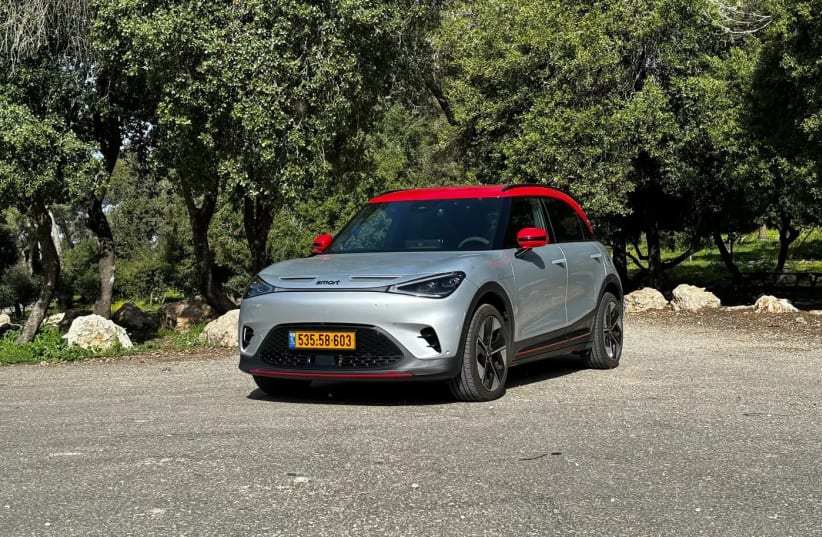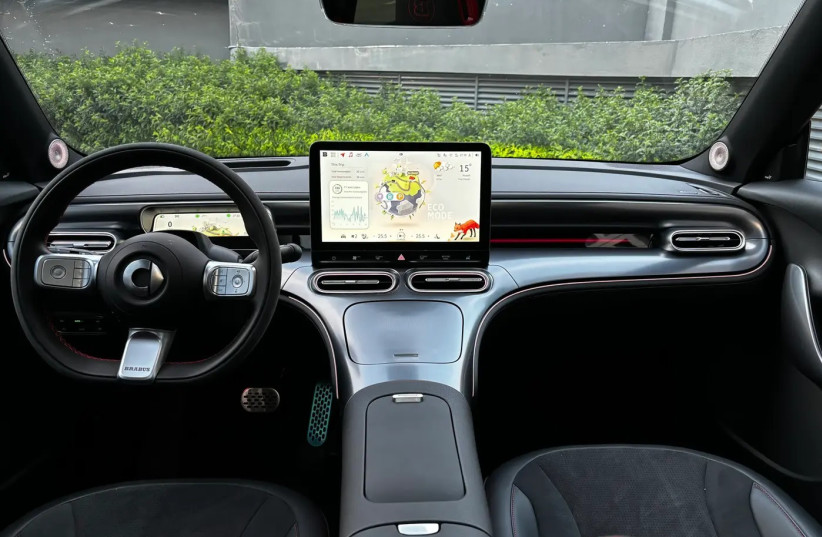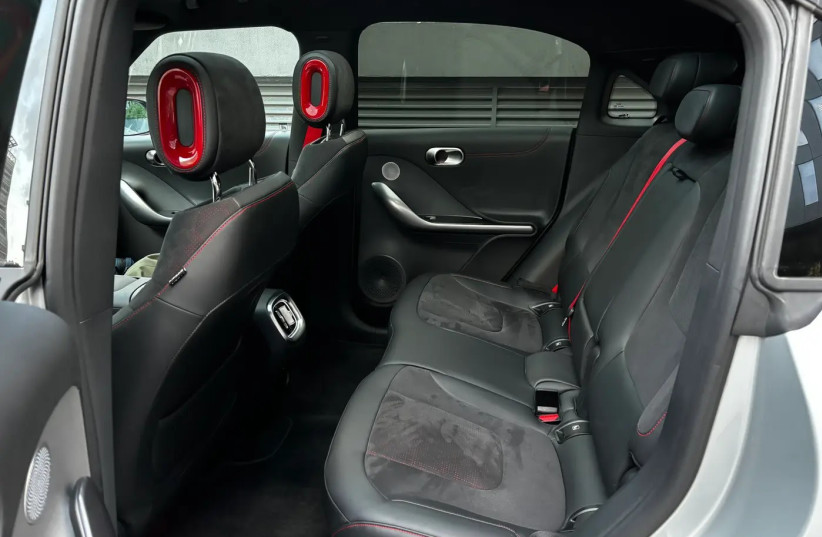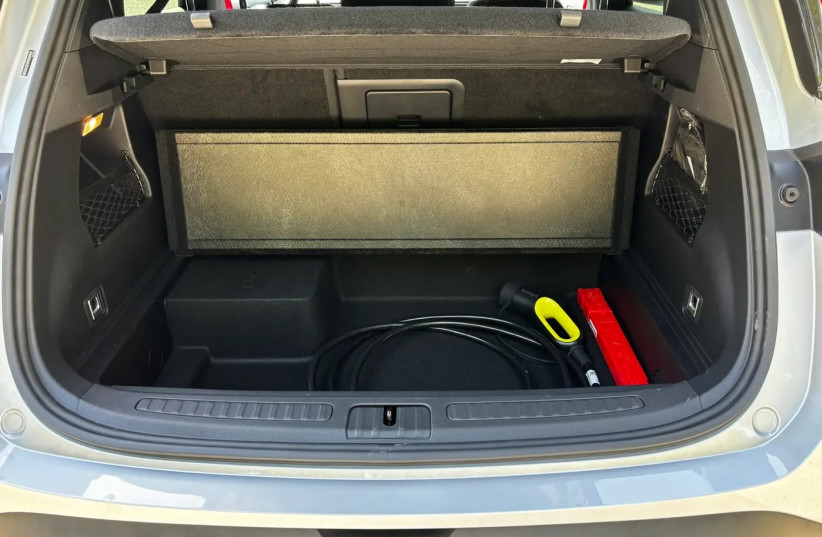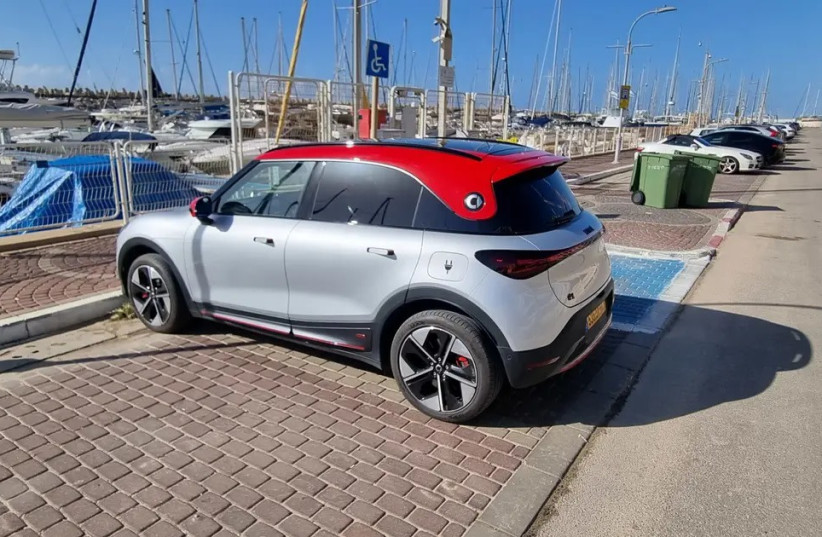Price: NIS 230,000Competitors: Volvo EX30, Zicker X, Tesla Model Y, Fiat 500eLiked: Performance, interior design, value for moneyDisliked: City comfort, multimedia screen, rangeRating: 8/10
Somewhere in Herzliya, at a distance of about a kilometer in a straight line, stand three cars. One in the Mercedes showroom, the second in the Volvo showroom, and the third in the Zicker showroom. At first glance, it is hard to think of more luxurious cars than the Smart #1, the EX30, and the Zicker X, but in reality, all three sit on a platform from their Chinese owner, Geely.
In a world where platforms dominate every good part, in a world where mechanics are slowly replaced by digitalization, the charm of this car or that is fading away. Instead, generic products are offered to consumers, offering a different experience mainly in design and marketing.
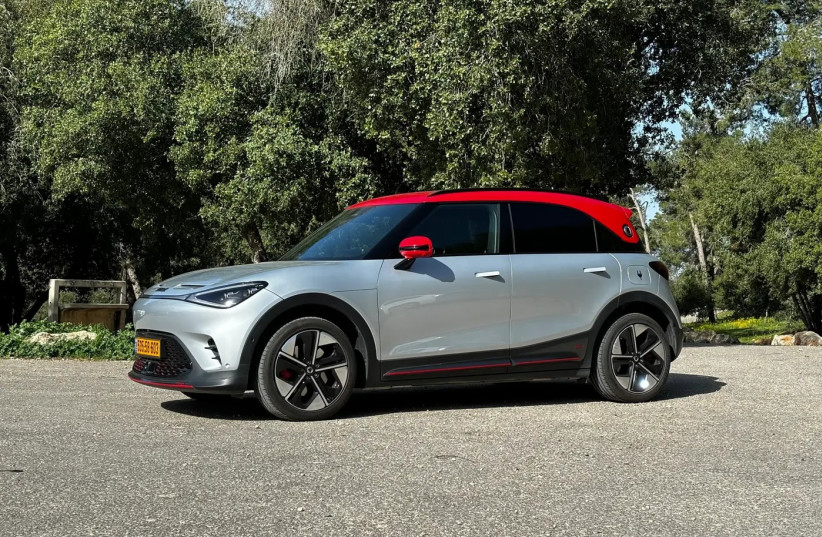
And here, exactly, Smart is trying to stand out. True, it is no longer just a cheeky urban car (for more information read the review on the standard Smart 1) but it seeks its uniqueness. This uniqueness comes from the Brabus improvement workshop, which for years has been taking Mercedes cars and turning them into performance machines. Unlike other platforms, the Smart can boast a name that catches attention but also raises expectations. Volvo or Zicker's speed does not indicate exceptional dynamic capabilities. Brabus workshop, on the other hand, certainly does.
If you were looking for a true advantage in the partial ownership of Mercedes over Smart, in contrast to the full ownership of the Chinese Jili over the two other brands that enjoy the same platform, here stand the bumpers and the mufflers, but not only them. Let's get things in order.
Design: The exterior design feels more aggressive than the regular Smart but in moderation. The front grille includes a large air intake and two more air intakes on the front engine cover, because there is another engine in the back. Zims on the sides of the bumper and a red line framing the bottom of the car complement a look that catches the eye. On the sides, the signs of Brabus's involvement come as large rims, red calipers, and the same red line that continues along the car. A small emblem with Brabus written on it provides a clear explanation for all the red scattered on the car. You will encounter the same emblem at the back as well, but here there are no other distinctive sporty symbols apart from a modest spoiler. The test car also came with a red roof and mirrors in a matching color, in this case, it is only about choosing the colors for the specific car and not something that comes from the workshop in Germany.
At the end of the day, if you want to summarize the design, the changes are not radical enough for the Smart 1 to look like a wolf. They are enough for you to understand that it's not a sheep. Perhaps a wolf-dog will be a fitting description.
Passenger compartment: When you step inside, the powerful Smart sharpens messages. Red seat belts, more sporty seats with a large B on the headrest, aluminum pedals, a short steering wheel with red stitching, and a large Brabus lettering. Everything here conveys that it's not just another urban jeep but something waiting for a checkered flag.
Beyond the upgrades, the cabin itself feels much more like a Mercedes than a Jeep. The aluminum (or aluminum-colored plastic), the high console between the seats, the air vents, and the round speakers all strongly resemble cars from the manufacturer based in Stuttgart. As a bonus, the assembly quality meets Mercedes' expectations, although the material quality is slightly lower.
Of course, not everything here is European. The screens resemble Chinese cars with a large central screen hanging on the dashboard and a narrow digital instrument panel displaying driving data simply. The human engineering is interesting. The graphics are very beautiful, and there's a fox standing on the right side making vase sounds most of the time. The access to Android and Apple is excellent and mirrors the phone on the screen entirely. Even transitioning from phone projection mode back to the main screen is easily done through a row of buttons peeking from the top of the screen. On the other hand, the system is not very strong in terms of performance, so the responses to commands are slow and sometimes frustrating. In addition, the number of secondary screens and menus required for even basic operations is high, even compared to what is usual in new cars.
Fortunately, there are several touch buttons leading to important functions relatively easily, although the system doesn't offer particularly smart human engineering. The equipment is very rich. We won't go into all the details, but heated seats and steering wheel, automatic parking, and a huge panoramic roof are small examples on a very long list.
Spacious: The cloudy hints to a sporty experience cannot affect the sitting posture. It is high and Japanese. The expectation for a sporty experience is fading (for now). The interior space is excellent and it is easy to bring the steering wheel to an ideal position.
The successful spaciousness also continues in the back. Two adults will be able to sit here comfortably with enough space for their heads and legs, at least if they are not unusually tall people. Rear air conditioning and a pair of USB-C outlets will allow for comfortable living for the rear passengers. The charging compartment is less impressive, with 311 liters the bulky vehicle does not offer much more space than the average mini SUV. The shelf offers plenty of space underneath it, but the loading threshold is also high.
Equipment: 12.8-inch multimedia screen, Android Auto and Apple CarPlay integration, 9.2-inch digital instrument cluster, driver display, 19-inch wheels, electric driver's seat, metal paddles, engine sound simulation, leather and Alcantara upholstery, panoramic roof, wireless charging for mobile phones, electric tailgate, front and rear parking sensors, 360-degree camera, smart key, climate control with rear vents.
Engine and performance: So how does this car drive? Is there a justification for the explosive name? A strong press on the paddle and the powerful smart overtakes a long truck with ease. Fast, but not hysterical pace. It turns out this is how it drives in "Eco" mode. Switching to "Brabus" mode changes the colors in the passenger compartment, the display, and the sound. Pressing the electric paddle and the car smears the landscape on the mirrors.
The first time you do this, it is reasonable that you will be surprised and burst into laughter. This will also happen for the fiftieth time. The beloved Jeep jumps from 0 to 100 km/h in 3.9 seconds. Understand, these are numbers of an Audi RS3 or Mercedes AMG A45 that cost more than twice as much. The forward space leap that the car produces can be surprising and certainly not suitable for new drivers. Smart Brabus offers performance of a supercar, at no less, at a price of a luxury car. It will humble almost any car on the street up to 100 km/h, except for the two sisters on the platform.
One of the successful components in the experience Brabus offers is the sound. As the speed climbs, the noise of the engine combined with mechanical roar and electric hum intensifies and grows. The sound succeeds in doing something that few engines, electric and especially non-electric, can achieve - encouraging you to accelerate. Every time you feel that the engine has reached its peak, the sound hints that there is a little more electric juice to squeeze out.
Comfort and behavior: The impressive performance and appealing sound require a chassis that can harness them. Brabus has a sophisticated suspension system on the rough side of the scale and two engines front and rear designed to support the wild power.
On the winding road, Brabus moves with surprising elegance between the turns. The grip is good while avoiding excessive stiffness. Even on a less grippy surface, it is well planted, slightly swaying and responding well to steering commands. The brakes manage to shave off speed, and the energy recovery system eagerly charges the electric enthusiasm back to the battery. Those who tune it are knowledgeable in heavy cars and abnormal performance.
The pace rises and when transitioning from a fast leadership to something truly sporty, like one that tries to test the limits of the sporty Jeep, weight and platform limitations emerge. She doesn't communicate, not from the chassis and certainly not from the handling. Her reactions to slow and cumbersome weight transfers reveal the gap between her and real sports cars.
Bad? Not really, because most drivers won't take her to those places. Most certainly won't push her hard and will simply wait until the end of the round before releasing the smart towards the car's front bumper, pondering upon the ponder.
But tuning the stubborn one comes at a price, mainly in the city. As long as you drive slowly and don't challenge the rattling chains, most of it will be fine. Major disruptions in the city will move her faster than desired and turn her into a nuisance and sometimes a bit irritating. Outside the city, isolation from noise is good and comfort at high speed is good overall.
Range and charging: Here a small surprise was recorded. Our test included trips between relatively calm urban sections alongside segments of dynamic driving and urban driving. At the end of the test, the small smart withstood an energy consumption of about 20 kilowatt-hours per 100 km. The figure is very similar to the regular version we tested, and given an effective battery size of 62 kilowatt-hours, it offers a real range of about 310 km. For a car with an official range of 400 km and performance similar to a spaceship, the figure is acceptable.
Fast charging is good with a maximum rate of 150 kilowatts. We needed about 50 minutes to fill it from 40 to 92%, with most of the time spent on charging above 75%. Not bad. For your information, there is also an AC charging at a rate of 22 kilowatts, which is almost a balancing act given the combination of reasonable price and a small battery that charges quickly.
The bottom line: Smart ForTwo EQ by Mercedes is not the Smart you are familiar with. The small, weak, and urban car has been replaced by a luxurious Jeep with decent behavior and adrenaline-inducing performance. When looking at the alternatives in a tough market, it's hard not to understand why many people would choose the Smart ForTwo EQ over direct and indirect competitors. The performance is in territories that only a few other cars offer, and it comes with a non-traditional sound system.
The interior space, excluding the cargo compartment, is good for a young family, although the budget for seat cleaning is expected to be high. The relatively fast charging, especially at AC stations, the impressive and equipped passenger compartment, and the price, yes the price, are reasonable considering the performance and the lengthy list of equipment, even though it has increased by NIS 20,000 since its launch due to the increase in purchase tax.
Yes, the comfort is not impressive, the range is only reasonable, and the human engineering is also not exceptional. But if you want to enjoy the power of your electric car, there are not many cars that offer such a combination at the given price. Just remember that for a truly sporty driving experience, you still have to choose between a car that burns trees or an electric car that burns your pocket.
On the technical side: Smart 1Engine: two electric, 428 hp, 59.5 kg/mTransmission: Auto, direct drive. Dual driveBattery: 66 kWhMaximum fast charging: 153 kWh
Performance (manufacturer):0-100 km/h (seconds): 3.9 secondsTop speed: 180 km/hRange: 400 kmTest range: 310 km
Dimensions:Length (m): 4.30Width (m): 1.82Height (m): 1.64Wheelbase (m): 2.75Cargo space (liters): 313Weight: 1,975 kg
Safety:European crash test rating: 5 out of 5 starsActive safety: Autonomous emergency braking front and rear, adaptive cruise control, lane keeping, off-road vehicle alert and prevention, automatic high beam, passing vehicle alert by door opening
Warranty:3 years or 100,000 km for the vehicle, 8 years or 160,000 km for the battery
